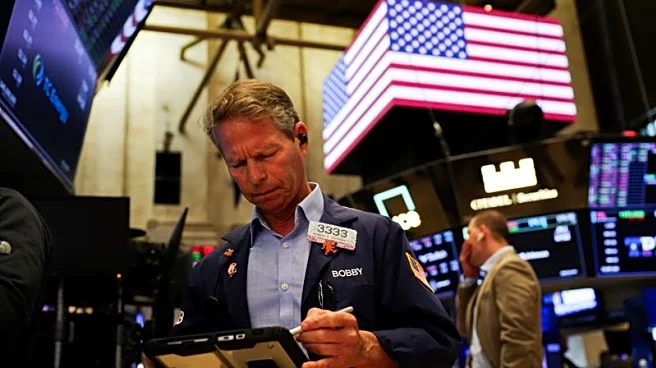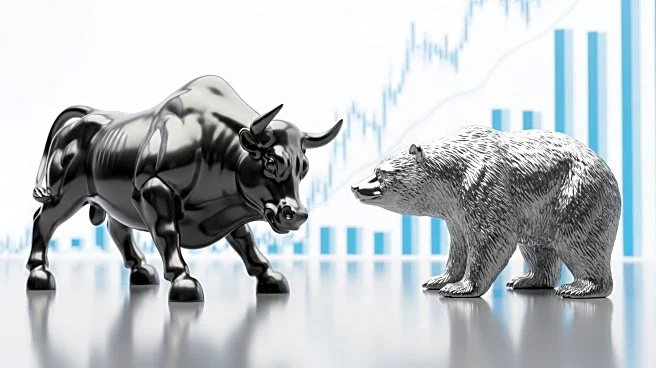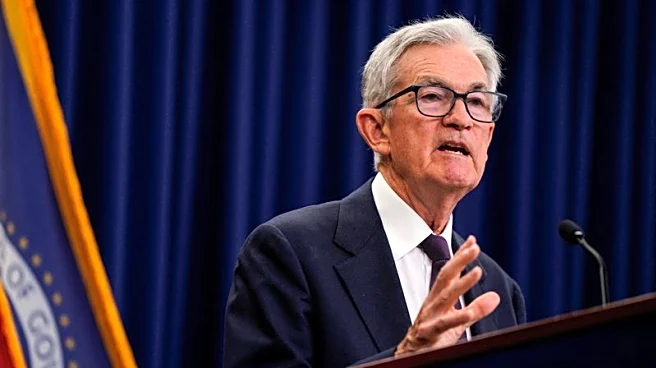What's Happening?
Andrew Ross Sorkin's latest book, '1929: Inside the Greatest Crash in Wall Street History — and How It Shattered a Nation,' delves into the events surrounding the infamous stock market crash of 1929. The book provides a detailed narrative of the rise
and fall of key financial figures during this tumultuous period. Sorkin's work is characterized by its vivid portrayal of the era's bankers and fund managers, who mingled with celebrities and royalty, negotiated foreign policy, and faced various personal and professional downfalls. The book captures the opulence and excess of the time, while also highlighting the moral complexities and ethical dilemmas faced by those involved in the financial sector. Sorkin's narrative is rich with detail, offering readers a glimpse into the lives of those who played pivotal roles in the crash and its aftermath.
Why It's Important?
The 1929 stock market crash was a pivotal event in U.S. history, leading to the Great Depression and significant changes in economic policy and regulation. Sorkin's book sheds light on the human stories behind the financial disaster, offering insights into the motivations and actions of key players. By exploring the personal and professional lives of these individuals, the book provides a deeper understanding of the factors that contributed to the crash and its widespread impact. This narrative is particularly relevant today, as it serves as a cautionary tale about the dangers of unchecked greed and the potential consequences of financial mismanagement. The book's exploration of the crash's impact on society and the economy underscores the importance of regulatory measures and ethical considerations in the financial industry.
What's Next?
Sorkin's book may prompt discussions among policymakers, economists, and historians about the lessons learned from the 1929 crash and their applicability to current financial systems. It could lead to renewed interest in examining the effectiveness of existing regulations and the need for further reforms to prevent similar crises. Additionally, the book might inspire further research into the personal stories of those affected by the crash, offering new perspectives on the social and economic ramifications of financial disasters. As readers engage with Sorkin's narrative, there may be increased awareness and debate about the ethical responsibilities of financial institutions and their leaders.
Beyond the Headlines
The book's portrayal of the 1929 crash highlights the ethical and moral challenges faced by those in the financial sector, raising questions about the role of personal responsibility and integrity in business. It also explores the cultural and societal impact of extreme wealth and the disparities it creates, prompting reflection on the broader implications of economic inequality. Sorkin's narrative may encourage readers to consider the long-term effects of financial crises on communities and the importance of fostering a more equitable and sustainable economic system.














